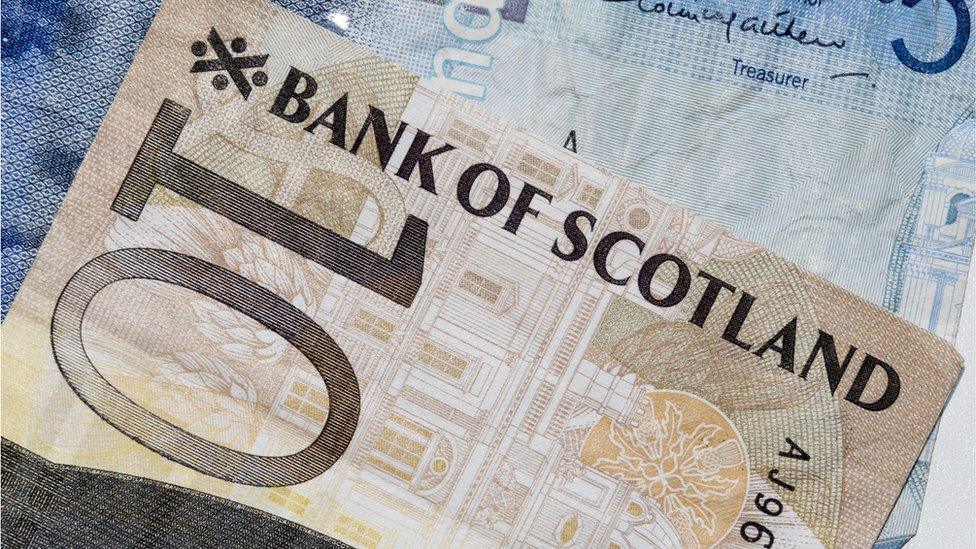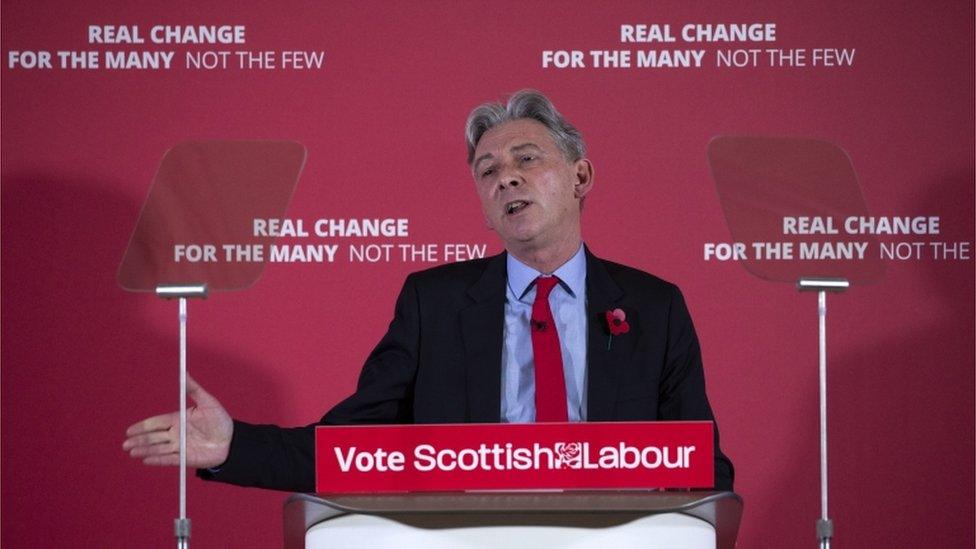General election 2019: Labour's £100bn pledge for Scotland
- Published

Scottish Labour leader Richard Leonard and Jeremy Corbyn have been talking up the party's spending plans
In a crowded field for big spending promises, a Corbyn-led Labour was always going to want to be the one that had the biggest bazooka.
So, while the Lib Dems talk of a £50bn dividend from not leaving the EU, Labour has gone for clear red water between its offer and that of its rivals.
Hence the rise from £70bn to £100bn, saying to voters, "if you thought we were thinking big, think again, and think bigger".
The previous £70bn was made up of £40bn capital spend on infrastructure and housing, and £30bn revenue, or day-to-day spend on running services.
Of the total, £20bn was to be spent on Labour's planned National Transformation Fund, with capital for housing, energy, telecoms, transport, science, and the same again on its investment bank.
Constitutional change
The other £30bn was to be as a result of uplifts in Whitehall departmental spending, translating into hikes to the Holyrood block grant.
To that, Labour is now adding £20bn more in block grant spending, all of that to be for Holyrood ministers to distribute, subject to getting their budgets passed. There's another £10bn for the transformation fund.
What does it mean in spending terms? Both a big lift, and yet, nothing.
In public spending terms, bundling capital and revenue spending over 10 years is close to meaningless. It's for effect.

And one effect Labour hopes to achieve is to blast the case of Scottish independence out the water.
Labour's argument - "We're going to make such a difference with this level of spending and change that constitutional change will pale."
Can it be afforded?
For now, borrowing is cheap. But there comes a point when borrowing brings a higher risk premium on bond markets.
That means loans become more expensive. Labour hopes to impress on voters and bond traders that much of this would be spending as investment, putting the economy on a more sustainable path.

CONFUSED? Our simple election guide, external
POLICY GUIDE: Who should I vote for?, external
REGISTER: What you need to do to vote

- Published19 November 2019

- Published6 November 2019
